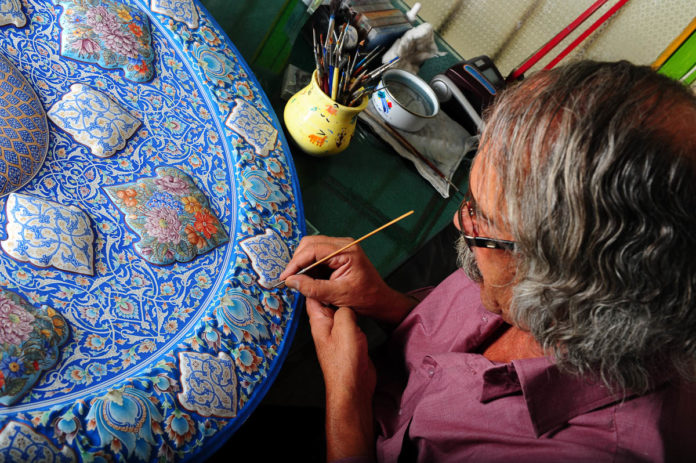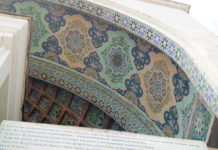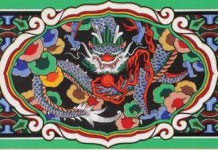Enamelling is an art based on painting and decoration of the surface of metal bodies and sometimes ceramic objects covered by a metal-based glaze. Enamel is a clear glazing and is the product of glass obtained from merging glass glaze and metal oxides. Having baked in a kiln, it becomes hard like glass. Enamelling is done on the copper and brass bodies. When applied to jewellery and decorative objects, it is used in addition to copper, gold and silver too.
As for the history of making enamel works, no precise idea may be expressed. The first works of enamelling which have been ever found so far are six golden rings which date back to 1300 B.C. in Cyprus. They are the only genuine gemmed enamelling works. In Iran, some of the researchers believe that it dates back to 1500 B.C. The height of enamel art was in the Seljuk period.
Enamel-workers present their works in two styles: painting and squaring. Isfahan is known for the painting style. In order to prepare enamel works, several stages should be completed. First, the object which is to be enamelled is made of copper in any desired shape and size by copper-worker. Second, its surface is coated by a kind of white glaze (Kaolin) after 3-4 times heating in a kiln with 700-degree centigrade for a certain time. Now it is prepared for painting. After suitable colouration compatible with the used colours, the temperature of the kiln is adjusted so that while colour sticks to the body of the enamel it prevents burning. Enamel-workers use gold oxide, copper oxide and fine cohesive mud (gel mashi) to prepare red, green and blue and yellow colours respectively. One of the important factors determining the quality degree of a piece of enamel work is non-scratchability of its body surface after firing.
This entry is supplied by the Iran Culture, Heritage and Tourism Organisation – Isfahan





